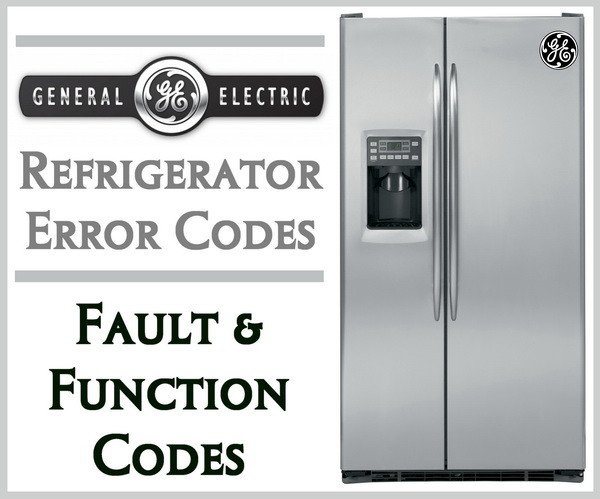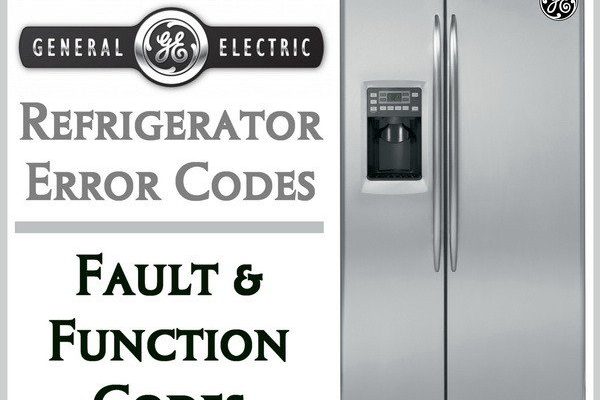
Think of your refrigerator as the booming heart of your kitchen — it’s always working, day in, day out, to keep your food fresh and safe. When it sends out an “OE” error code, it’s akin to your body showing a mild fever. While you might feel tempted to brush it off, it’s often better to understand and address the underlying issue before it becomes a full-blown problem. By learning about it now, you’ll not only save yourself from potential grocery losses but also extend your fridge’s life and maintain its efficiency. So, let’s dive into what you need to know about this pesky error code.
Understanding Error Code OE
The “OE” error code is like a digital message from your fridge indicating that something isn’t quite right with its operation. Specifically, it often relates to a problem with the refrigerator’s automatic defrost cycle. Imagine if a snowstorm hit your freezer due to improper defrosting; it could disrupt the delicate balance of your kitchen ecosystem. This code is usually triggered when there’s a failure in maintaining the proper defrost timing, which can lead to ice build-up.
Think of the defrost cycle as a warm blanket that occasionally melts the ice build-up in your icebox. When this cycle doesn’t run smoothly, it’s like your fridge catching a cold—it can’t perform its primary function: keeping food cold. Left unaddressed, this might lead to your refrigerator working overtime, consuming more energy, and eventually risking damage to components.
In this situation, ignoring the “OE” error might seem convenient, but it’s sort of like ignoring that your car’s check engine light is on. It might seem fine for a while, but eventually, it’s going to cost you more time and money. Instead, it’s much better to investigate the cause of this message and resolve it before small issues morph into significant headaches.
Common Causes of the OE Error
Now that we know what the “OE” error is, let’s explore what might be causing it. One of the most common culprits is a faulty defrost timer. This timer is like a conductor of an orchestra, making sure the defrost heater works in harmony with the cooling system. If it fails, ice can accumulate in places it shouldn’t, similar to a kid’s snow fort gone wild in the freezer section.
Another potential cause is a malfunctioning defrost heater or thermostat. Think of these elements as a team that ensures the fridge doesn’t freeze over or thaw out too much. If either of these components isn’t functioning correctly, the defrost cycle can go awry, leading to the dreaded “OE” message on your refrigerator’s display.
Sometimes, the issue could be as simple as a clogged or blocked defrost drain. This drain is like the gutter of your fridge, ensuring that the melted ice doesn’t just sit around and refreeze. If blocked, it causes water to pool up and freeze, effectively jamming up the works. Addressing these issues might involve a bit of DIY investigation or calling in a professional, but rest assured, these are solvable problems.
Addressing the OE Error
Here’s the deal: fixing the “OE” error can be straightforward if you approach it systematically. Start by unplugging your refrigerator for a few minutes. This acts like a quick reset, sometimes clearing minor electronic glitches. Once plugged back in, see if the error persists. If it’s gone, you might have hit the jackpot, but if it’s still there, more investigation is needed.
Next, inspect the inside of your refrigerator and freezer. Check for ice build-up around the evaporator fan. If you see more ice than a winter wonderland, it’s likely a defrost issue. Carefully defrost it and monitor if the error reappears. Also, check the defrost drain for blockages. It’s as simple as ensuring water flows freely out when the system defrosts.
If these steps don’t resolve the error, it might be time to call a professional. A trained technician can confirm whether components like the defrost timer or heater need replacement. It’s comparable to calling in a mechanic for your car—you’ll have peace of mind knowing that the job was done right.
Preventing Future Errors
Prevention, they say, is better than cure. To stave off future “OE” errors, ensure that your refrigerator and freezer compartments aren’t overstuffed. An overcrowded fridge is like a blocked airway, preventing cold air from circulating as it should. Keep it clean, and periodically check the defrost drain for clogs—this is as essential as changing your car’s oil regularly to prevent engine trouble.
Moreover, setting reminders to perform routine maintenance checks on your fridge can be incredibly beneficial. Consider semi-annual inspections, where you clean coils and ensure the defrost cycle is functioning correctly. This habit can elongate your refrigerator’s life, keeping it efficient and reliable.
In conclusion, while it might be tempting to ignore the “OE” error code, addressing it promptly ensures your refrigerator continues to perform like a well-oiled machine. Understanding and acting on this code not only saves you from future trouble but also keeps your kitchen running smoothly. So next time you see that error, consider it a nudge to take good care of one of your most hardworking appliances.
